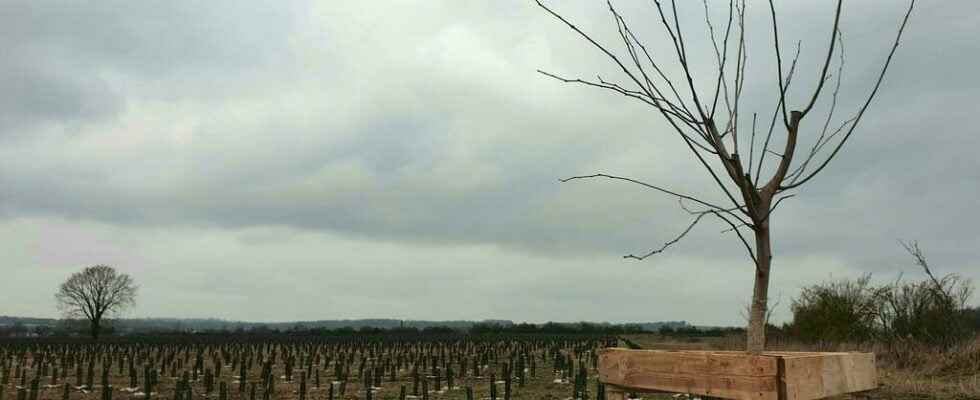In the Paris region, in the plain of Pierrelaye, near Cergy, a forest is being planted. A resilient forest, on polluted soil, with trees adapted to global warming.
Thousands of small trees, almost as far as the eye can see. This is the new decor of the plain of Pierrelaye, northwest of Paris, near Cergy, where we have started to create a forest. Workers draw lines of trees, armed with a towel. Small holes in the ground, in the chain, it is linked, hundreds of oaks are planted, and even thousands. And maples, and service trees, every one or two meters, plants of a few centimeters which will soon form the new forest of Pierrelaye.
“ We are on fairly high densities, since we have 2 500 stems per hectare, so as to create a forest atmosphere more quickly, explains Joseph Passot, afforestation project manager at the ONF, the National Forestry Office, project manager of this planned plantation on more than 1,300 hectares. The fact of squeezing them, it will come to sheathe them, force them to grow with each other, to grow like a forest. Eventually, when the forest is a little more mature, there will be silviculture work to help the natural stem selection process. So the plants that you see there are not all going to reach a term like what one might imagine in the forest. »
Vegetables full of lead
This forest will grow on polluted soil. It is here that the city of Paris dumped the sludge from its sewers for more than a century. Vegetables and aromatic plants were grown there, full of heavy metals, until all cultivation was banned in 1999. The objective of the forest is to occupy the soil to prevent it from being directly accessible and assimilated by the population: it is a question of masking the polluted soil and occupying it with vegetation, explains Andrea Németh, landscape engineer at the ONF, who shows us a path of white mulberry trees recently planted. These mulberry trees do not produce fruit, precisely to avoid the possible consumption of fruit. It is because of the polluted soils that fruit trees have been ruled out in the choice of forest species, to avoid this attraction of the public for picking. »
Another imperative in the choice of species: trees capable of withstanding global warming, drought, even in a century. The ONF selected the species using climate modeling tools, with scenarios over 50 or 100 years. ” Depending on these simulations, we have added species present in France but which are perhaps more visible in forests with more complicated water or sunshine constraints. This is the example of pubescent oak, a developing species in France, more southern, which we are now installing in territories where we were not necessarily used to seeing it, and which seems more adapted to the climate. », explains Joseph Passot.
a million trees
Some 80 species of trees will be planted here. A total of one million trees. The future forest will link up with the neighboring forests of Saint-Germain and Montmorency. It is the green belt of Greater Paris, a plant continuity. And when there is plant, there is necessarily animal. “ It will bring back the animals that are typically found in the forest, so there are already a few wild boars, a few deer, rabbits, pheasants, hares, a whole bunch of animals that are there and that will ultimately benefit more from those environments. Of course, when you bring something new to a place, the animals are quite curious so they come to taste it. The birth of a forest is also a rebirth.
“Are there only trees and animals in a forest? »
No, of course not, there is also, among other things, something that you will never see with the naked eye, and yet there are billions of them. Microalgae. In one gram of soil, there are 5 million! And according to a CNRS study published this week, microalgae absorb 30% of CO2 emissions. As much as the plants. Strong allies in the fight against global warming. Studies are also being carried out to produce, with microalgae, hydrogen and biofuel. But to cultivate them, trees would have to be felled.
